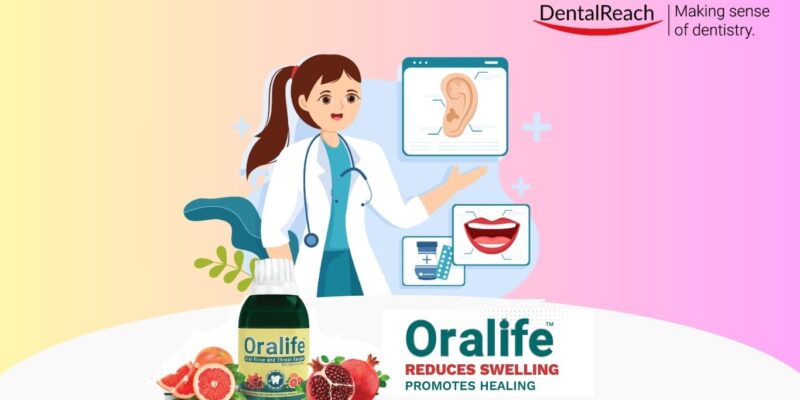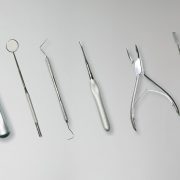Introduction
Dentistry and otolaryngology (ENT) are distinct disciplines, yet they intersect in crucial ways that affect patient outcomes. Oral health can influence ENT conditions and vice versa, meaning collaboration between dentists and ENT specialists is often beneficial. For example, sinus conditions can masquerade as dental problems and vice versa, leading to misdiagnoses if evaluated in isolation. To prevent serious complications arising from the close correlation between dental infections and sinus disease, cooperation between dentists and otolaryngologists is essential.
The same principle of interdisciplinary care applies to other areas: sleep-disordered breathing (obstructive sleep apnea), chronic mouth breathing due to nasal obstruction, and even certain speech and developmental issues have overlapping dental and ENT components. This article explores how ENT specialists contribute to dental patient care across these domains.
Sinus and Dental Overlap
One of the most significant interfaces between ENT and dental practice is the management of sinus pathology related to dental issues. Odontogenic sinusitis (ODS) – infection of the maxillary sinus stemming from a dental source – is increasingly recognized as a common cause of chronic sinus infection. Multiple studies have demonstrated that dental pathologies contribute to a substantial fraction of sinusitis cases. In fact, more than 40% of chronic maxillary sinusitis cases have been found to be odontogenic in origin. Despite this high prevalence, ODS is routinely misdiagnosed by both dentists and ENT doctors. Such oversights can result in treatment failure and potentially serious complications; if an odontogenic sinus infection is left untreated, it may spread to the orbit or even intracranial structures (risking vision loss, meningitis, or brain abscess).
Managing sinus infections of dental origin requires an interdisciplinary strategy.
- An otolaryngologist will typically perform endoscopic sinus surgery or similar interventions to drain and clear the infected sinus, while
- a dental surgeon or endodontist must eliminate the originating dental infection (e.g. through tooth extraction or root canal therapy).
Dentists are encouraged to refer patients to an ENT specialist when unexplained chronic sinus symptoms or sinus tract issues involve the upper jaw, and conversely ENT physicians should consider dental evaluations for sinusitis that is unilateral or refractory to standard therapy. By doing so, both professions protect the patient’s health more comprehensively than either could alone.
Sleep Apnea and Oral Appliances
Obstructive sleep apnea (OSA) is another condition where dentistry and ENT medicine converge in patient care. OSA is a chronic disorder in which the upper airway collapses repeatedly during sleep, and it often requires multi-pronged management. ENT specialists are frequently involved in evaluating the airway (from the nose to the throat) and performing surgical interventions (such as septoplasty, turbinate reduction, tonsillectomy, or uvulo-palatal surgeries) to improve airflow. Dentists, for their part, play a key role in Dental Sleep Medicine by fabricating custom oral appliances (mandibular advancement devices) that reposition the jaw or tongue to maintain an open airway during sleep. Recognizing the complementary roles of these providers, sleep experts have increasingly advocated for integrated care.
In practice, interdisciplinary management of sleep apnea might include an otolaryngologist performing a drug-induced sleep endoscopy to pinpoint the sites of airway collapse;
- if the primary collapse is at the tongue base, a dentist-provided mandibular advancement device could be an appropriate solution, whereas
- enlarged tonsils or nasal polyps identified by the ENT would be better addressed surgically.
Such tailored treatment plans benefit from the combined expertise. Some advanced centers have even established multidisciplinary OSA clinics. In these programs, sleep medicine physicians, ENT surgeons, dentists, and oral maxillofacial surgeons work in concert to evaluate CPAP-intolerant patients and coordinate alternative therapies.
For the general dentist in practice, the key takeaway is to
screen patients for sleep-disordered breathing
and refer suspected OSA cases for medical assessment. Conversely, ENTs and sleep physicians should involve dental colleagues when oral appliance therapy is indicated.
Pediatric Airway and Dentofacial Development
Pediatric patients especially benefit from ENT-dental collaboration, as airway problems in childhood can affect facial growth, dental occlusion, and even speech development. Chronic mouth breathing in children is a prime example: prolonged mouth breathing (often due to nasal obstruction from enlarged adenoids or tonsils) is associated with alterations in craniofacial growth and malocclusion. Research indicates that mouth breathing is alarmingly common with a prevalence as high as 50–55% in children – and it not only impacts dental and facial development but also the child’s quality of life (e.g. poor sleep, behavioral changes).
When a child breathes mostly through the mouth, the tongue’s posture and airway dynamics change, often resulting in a narrower, high-arched palate, a longer facial profile, and dental misalignments. Adenoid enlargement in particular was correlated with a Class II skeletal pattern (retruded lower jaw and overjet), whereas tonsillar hypertrophy was more often linked to a Class III tendency. These findings support the long-held observation that untreated airway obstruction in children can predispose to orthodontic problems.
Intervening early with a team approach can significantly improve outcomes.
- Otolaryngologists play a central role in relieving the airway obstruction – for example, by performing adenoidectomy and/or tonsillectomy in a child with adenoid/tonsillar hypertrophy and resultant mouth breathing. Restoring nasal breathing not only improves the child’s oxygenation and sleep, but also can halt or mitigate the progressive dental changes.
- From the dental side, pediatric dentists and orthodontists address the consequences of chronic mouth breathing. They may use orthodontic expanders to widen a constricted palate or guide jaw growth, thereby correcting malocclusions and also increasing the airway dimensions. The timing of orthodontic intervention can be critical; often, orthodontists will defer certain treatments until an ENT specialist has alleviated the airway obstruction, to ensure the child can comfortably nasal-breathe during and after orthodontic therapy.
Strong communication between ENT and dental professionals is key in these pediatric cases. For instance, orthodontists commonly refer young patients to ENT specialists upon observing signs of airway obstruction (e.g. adenoidal facies, enlarged tonsils, or radiographic evidence of narrow airway) before initiating definitive orthodontic work. Conversely, ENT specialists should be mindful of the dental and orthodontic implications of airway issues.
Case Studies in Collaboration
To illustrate the impact of ENT-dental collaboration, it is helpful to consider a few real-world examples and documented case studies:
-
- Odontogenic Sinusitis – Joint Surgical Management: An adult patient with chronic unilateral maxillary sinusitis was found to have a hidden dental infection (a failing root canal) as the source. Instead of treating the sinusitis and tooth separately in sequence (which can prolong illness), the care team pursued a one-stage combined approach. The ENT surgeon and dental surgeon operated together –
- the ENT performed functional endoscopic sinus surgery (FESS) to clear the infected sinus and create drainage, while
- the dental surgeon simultaneously extracted the infected tooth and cleaned the oral side of the sinus floor.
In a recent prospective study, ODS cases managed with this type of concurrent ENT-dental surgery, resulted in complete resolution of infection in 97% of patients and at a faster rate. The case also underscores the importance of recognition: had either specialist tried to treat the patient in isolation (with sinus surgery alone or dental treatment alone), the outcome likely would have been failure or recurrence. Instead, collaboration cured the patient.
-
- Obstructive Sleep Apnea – Multidisciplinary Care: Consider the scenario of a middle-aged patient with moderate obstructive sleep apnea who cannot tolerate CPAP therapy. searchig for an “Alternative to CPAP” . The ENT exam might reveal a deviated nasal septum and enlarged tongue base, while the dental evaluation finds a small retrusive jaw. The team can then formulate a combined plan:
- the ENT specialist performs septoplasty and reduction of tongue-base tissue (or implants a hypoglossal nerve stimulator), and
- the dental sleep specialist fabricates a custom mandibular advancement device.
With this coordinated plan, the patient’s apnea-hypopnea index improves dramatically and they experience better sleep. This multidisciplinary paradigm is supported by guidelines and experts. The joint AASM/AADSM guideline mentioned earlier not only recommends oral appliances in appropriate cases, but also implicitly requires ENT involvement to screen for anatomic issues and treat them. It is notable that teamwork yields better adherence and outcomes in OSA; patients are more likely to follow through with an oral appliance or combined therapy when they feel each aspect of their condition (nasal breathing, pharyngeal patency, jaw position) is being addressed by the right specialist.
-
- Cleft Palate and Speech – ENT & Orthodontic Teamwork: Craniofacial anomalies such as cleft lip and palate demand the ultimate collaboration between ENT surgeons, oral surgeons, and orthodontic specialists. A compelling example is the use of nasoalveolar molding (NAM) in infants with cleft lip/palate. NAM is a pre-surgical orthopedic therapy provided in the first months of life to reshape the baby’s gums, alveolar ridge, and nostrils before surgical repair of the cleft. At Arkansas Children’s Hospital, for instance, pediatric otolaryngologists partnered with craniofacial orthodontists to implement a NAM program.
- The ENT surgeon (as the leader of the cleft team) identified appropriate candidates and monitored the airway and feeding, while
- the orthodontist fabricated and adjusted the molding appliance weekly for 2–3 months.
The result of this collaboration was markedly improved anatomy by the time of lip and nose surgery. “Many of these patients go on to have better cosmetic outcomes than with traditional techniques, with better scarring and nasal position,” reports Dr. Larry Hartzell, the ENT specialist directing the program. Perhaps most importantly, he notes, NAM can reduce the number of future surgeries required for the child. This case study showcases how working together across disciplines can change the trajectory of a patient’s treatment course.
These case scenarios, ranging from common conditions like sinusitis and OSA to complex congenital cases, all drive home a consistent message: patients benefit when ENT specialists and dental professionals work hand-in-hand. Whether it is a combined surgery, a joint therapeutic plan, or a coordinated long-term follow-up, the synergy between the fields often produces superior outcomes than isolated care.
Conclusion
In summary, ENT specialists contribute to dental health by managing sinus pathologies that impact oral health, co-treating sleep apnea with dentists, correcting nasal obstructions and mouth breathing that affect occlusion, and addressing ENT-related speech issues in dental patients. The mouth, nose, throat, and ears do not exist in isolation within the human body; nor should our approach to healthcare. For dental professionals, having an ENT specialist “on the team” is an invaluable asset in advancing the overall well-being of patients.
References
- LaTrace A. Why dentists and ENT doctors should collaborate more. Dental Economics. 2023 Oct 19.
- American Association of Endodontists. Maxillary Sinusitis of Endodontic Origin. Colleagues for Excellence Newsletter. 2018.
- Craig JR, et al. Management of odontogenic sinusitis: multidisciplinary consensus statement. Int Forum Allergy Rhinol. 2020;10(7):901-912.
- Kocum P, et al. One-stage combined ENT and dental surgical treatment of odontogenic sinusitis: a prospective study. Eur Arch Otorhinolaryngol. 2024;281:1347–1356.
- AASM/AADSM. Clinical practice guideline for the treatment of obstructive sleep apnea with oral appliance therapy. J Clin Sleep Med. 2015;11(7):773-827.
- Bennett K. AADSM Press Release: Communication and teamwork between sleep physicians and dentists are imperative. 2015.
- Patel AD, et al. Awareness about orthodontists’ role in treating OSA and mouth breathing among otolaryngologists(Survey). J Pharm Bioallied Sci. 2024;16(S3):S2012-S2014.
- Zhao T, et al. Association between adenotonsillar hypertrophy and dentofacial characteristics of children. J Stomatol Oral Maxillofac Surg. 2024;125(4):101751.
- Banter Speech & Language. How do adenoids and tonsils – and their removal – affect speech? 2019.
- UAMS Department of Otolaryngology – Head & Neck Surgery. Nasoalveolar Molding combines ENT, Orthodontics for cleft advantage. Accessed 2025.




















Comments